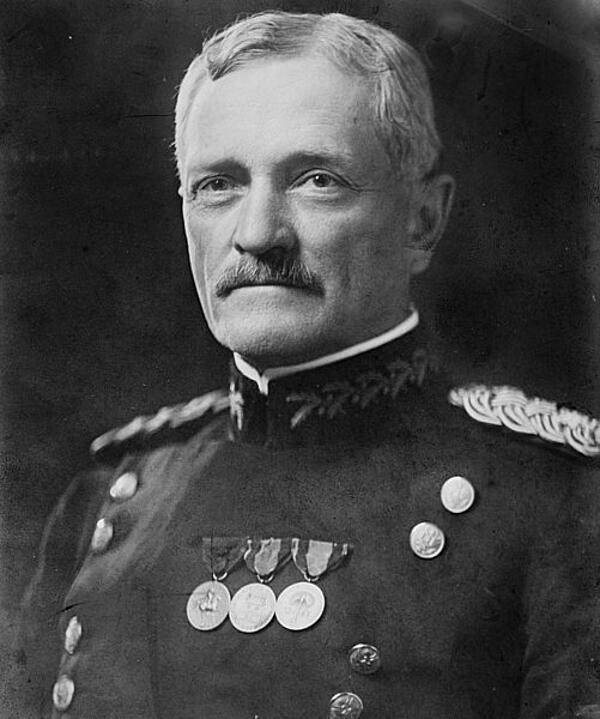General John Pershing
John Pershing was born in September 1860 in Laclede Missouri. He spent some of his life as a school teacher but in 1882 Pershing took an exam and was admitted to West Point.
At West Point, Pershing failed to stand out in his exams but he did manage to catch the eye of his trainers as a result of his leadership skills. As a result, he was elected president of the class in 1886 and he was given the task of commanding the Corps of Cadets when it presented arms when the funeral train of Ulysses Grant passed by.
In September 1891, Pershing was made Professor of Military Science and Tactics at the University of Nebraska and kept his position for four years. He then took on a more active military role, service against the Sioux and Apache tribes, and fighting both in the Cuban War in 1898 and in the Philippines in 1903. Additionally, he served as an observer with the Japanese Army in the Russo-Japanese War.
Thanks to his hard work, he was promoted to Brigadier General in 1906 and was tasked with leading the Mexican Punitive Expedition to capture Pancho Villa in Mexico in 1915, while World War One took hold over in Europe.

America declared war on Germany on 6th April 1917. Pershing was appointed commander of the American Expeditionary Force and, upon landing in England for a break before setting up headquarters in France, he was greeted by the king. The AEF was considered as the answer to the Allies military issues by many in Britain, and so they were very well received.
However, once Pershing arrived in France he found he had very differing opinions to those of the country’s military leaders, including Pétain and Haig; where Pétain and Haig wanted American troops to be used with those already stationed in France, Pershing wanted to wait until all the American troops had arrived and to use them as a separate entity. As a result of this dispute, America actually played very little part in the military events that took place in 1917.
As a result, when the Germans launched their last great offensive in March 1918 there was only a single American division on the Allied lines, while three divisions were in training areas. The German offensive posed a huge threat to Britain and France, threatening Paris and almost forcing British troops into the Channel. Unfortunately, the Americans still played little part.
However, the spring offensive forced Pershing to reconsider his course of action and in June he agreed to send troops from America to France. More than 584,000 men were sent over - such a large number that the British merchant marine had to aid its American counterpart to deliver the troops.
The German Army failed to cope with the huge numbers, and in July 1918 the French were able to launch a huge attack against the Germans from the Forest of Villers-Cotterêts. This attack featured two American divisions and a total of 54,000 American troops. Pershing took responsibility for commanding the successful offensive in Meuse-Argonne.
By August 1918, there were almost one and a half million American troops in France, all fighting under Pershing’s command. However, Germany were only able to send 300,000 men in response. The Allies announced that they were planning a major attack in 1919 that would be led by 100 American divisions, providing the greatest threat Germany had faced to date.
Germany were unable to deal with such odds, and had no choice but to seek an armistice.
As a result of his actions during World War One, Pershing became the US Army Chief of Staff in 1921 aged 64. He was also awarded the title of General of the Armies before he retired from active duty. He later penned his autobiography ‘My Experience of War’, which went on to win a Pulitzer Prize.
General John Pershing died on 15th July 1948.
MLA Citation/Reference
"General John Pershing". HistoryLearning.com. 2026. Web.
